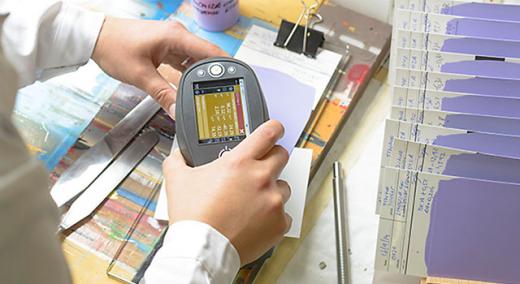Spending too much time and money on incorrect color? Even if you use the best color measurement tools available, your color will still fail without quality control. You may think you’re doing everything right, but if you (or worse, your customers) are rejecting a lot of products, then there’s more you should know.
|
ADVERTISEMENT |
Quality control (QC) means verifying the color you specify is the same color you manufacture, throughout production. Setting up a color QC program can help you accurately communicate color with clients and suppliers, inspect raw materials before you begin working, and verify that your color is correct before you ship.
Whether you have a quality control program or are considering one, here are five important components to consider with regards to color.
1. Quantify color using a spectrophotometer
Human vision is subjective, which leads to communication errors and confusion. A little brighter, a touch bluer, or a smidge darker are impossible to achieve without hours of trial and error. Measuring color with an instrument such as a spectrophotometer instead of just evaluating by eye can dramatically reduce that wasted time.
…

Comments
Color Quality Control
While color is not a physical property, it is an important attribute for many products. A visual tolerance for allowable variation needs to be established based upon expert evaluation under controlled environmental conditions as well as in a "natural" setting of where the color will be viewed by the customer. Then, a correlation can be mapped to a given analytical device that applies a numerical value to color. For a company that has yet to select an instrument to measure color, one must be extremely thoughtful to understand how the instrument receives a signal as well as how that signal is conditioned to provide you a number or a set of numbers to judge the quality and consistency of this attribute.
In my opinion, the 5 items listed in the article are important, but may need to be re ordered to ensure success.
Douglas - I appreciate your
Douglas - I appreciate your comments, and you make several good points. Specifcally, selecting the right type/geometry of instrument is a critical choice. While a single angle instrument (0°:45° or 45°:0°) is the right choice for some applications, a spherical device (d/8°) or a mutli-angle device may be the better choice. All of this is dependant on the material being measure, just as you menitoned. Investing in the work to determine the proper type of device for measuring color of a specific material is critical to success.
Add new comment